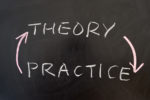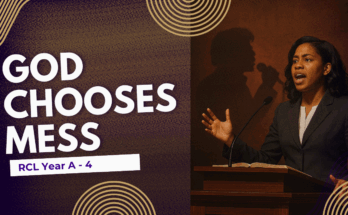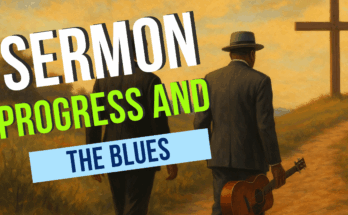As an Amazon Associate I earn from qualifying purchases.
There are multitudes of sermon outline sites. Some of them require you to pay for the outline, others are membership sites that give you access to thousands of outlines, and still others are completely free.
Some have asked me how can you use these outlines to effectively preach a unique word to the people? The answer to this question should be broken up into three components. First how can you evaluate the effectiveness of the outline, how can you modify the outline for use, how do you put flesh on the bones of the outline for preaching? In this article we will look at the first of these questions.
Is the Sermon Derived from the Chosen Scripture
While outlines are all over the place, many of them are either totally unusable or need modification before using. The first question one should ask when evaluating a sermon outline is: “Is the outline derived from the text?” Read the text of scripture and then read the outline. Think about it. Are they related?
In many cases this test will cause you to eliminate a lot of the outlines you find on the net and even in some books. It is as if he author simply thought up a few points that seemed “religious” and wrote them down as an outline for a sermon. However, such outlines would require to much work to salvage, so I would suggest tossing it and going on to another one.
Is it One Sermon?
Another common problem with many of outlines is that there is more information than you can adequately present in one sermon. You will see points, sub points, and sub points. Often there is enough information in the major points for each of them to become a sermon in a sermon series.
I heard a preacher once give a sermon on the end time. The preacher talked about signs in the social world, economic world, political world, etc. There were about 10 of these “worlds” and the sermon went on for 2 hours and actually felt like the length was 8 hours. The preacher actually had a sermon series that he delivered in one sermon rather than one sermon. So read the sermon outline and ask yourself, “Is this one sermon or many sermons?” The nice thing about this is that if you have a series, you can use the outline, rather than simply throwing it away. Use it to plan your sermon series.
Is this a Religious Lecture or a Sermon?
Not too long ago another preacher delivered a presentation that talked about the Q-source and Mark. The preacher defined Greek terms. the preacher even gave helpful background to understanding the text. However, the preacher did not call for change. The preacher didn’t seem to have a point beyond giving information to the congregation with religious material.
Some outlines suffer from now having what Henry Mitchell calls a “behavioral purpose.” Read the sermon outline. What is the purpose of the sermon? If you can’t see where it calls for change in wayward humanity, or celebrate the good news, or confront broken society, then you probably can’t use it.
Is it True?
Does the outline present the Gospel in a way that you understand? If you disagree with an outline, then toss it. You may disagree with the theology of a particular outline. In addition, there may be points that are just factually wrong. You may be able to salvage such an outline, but think carefully.
Conclusion
There are so many sermon outlines available that you might take a peak at a few here and there. However, it is still best to generate your own sermon outlines from interaction with the text and the Spirit. If you do need to use a sermon outline, please evaluate it before preaching. I hope this short article will help you do just that.
Amazon and the Amazon logo are trademarks of Amazon.com, Inc, or its affiliates.





